 Your new post is loading...
 Your new post is loading...
You have greatness in you. Cultivating it often takes role models, mentors, and loads of hard work. This fun quiz will help you find out which famous world leader you most resemble in your writing and may help you find an inspiring role model.
Words are hard. Whether you're a published author or just getting started with blogging, it's not always easy to string words together in a way that makes sense, sounds good, and makes the reader feel something. But every marketer should be able to write -- and, more importantly, every marketer can write. It's just a matter of finding the writing environment that works best for you, expanding your vocabulary, asking for feedback (and listening to it), and practicing. Luckily, there are a slew of great tools you can use to help improve your writing. Check out the list below, and feel free to add the most helpful ones you use in the comment section....
In 1977, according to the AP style guide I still occasionally refer to, using the acronym “TV” as a noun when writing about television was not advised.
“Acceptable as an adjective or in such constructions as cable TV [italics theirs]. But do not normally use as a noun unless part of a quotation,” counsels the item on “TV” in the 1977 edition of the AP Stylebook -- formerly titled “The Associated Press Stylebook and Libel Manual.”
Today we use “TV” and “television” more or less interchangeably as nouns, although the former is probably used more now than the latter. One thing the 1977 Stylebook reveals, however, is that “media” -- whether electronic or otherwise -- was not nearly the obsession for news organizations that it is today.
Part of the reason was that the world at large was not nearly as obsessed with media and technology -- and the companies responsible for them -- as we are now. There was so much less of it then too, obviously....
If you live in America, chances are you've heard (or used) the phrase "Don't put all your eggs in one basket."
Most of us know it means, essentially, that you shouldn't make all your plans based on one possible thing happening. But it's kind of a weird phrase, right? Have you ever stopped to wonder where it originated?
Its use in print has been traced to the novel "Don Quixote" by Miguel de Cervantes in the early 1600s, although it possibly was mistranslated to an inexact English idiom from the original and may have other roots in Italian phrases.
Different cultures around the world all have their own similar sayings — proverbs, if you will — that make sense to those who've grown up speaking the language but sound downright odd to anyone who hasn't.
James Chapman is fascinated by these sayings and how they translate across languages and cultures....
Did you ever wonder why you spend so much of your day wading through bullshit? Every worker must consume masses of information, but most of it is poorly written, impenetrable, and frustrating to consume. How did we get here? I’ve actually studied this question. In fact, Chapter 2 of my book explains it in detail. Basically: - Reading on screens all day impairs our attention. - No one edits what we read. - We learned to write the wrong way....
The change you are seeking in business writing varies depending on what you’re writing. For example: - A white paper seeks to change your opinion about a company. - A marketing email seeks to create loyalty or purchases. - Advertising creates a favorable impression toward a brand. - A web page educates you about products and pricing. - Instructions seek to educate you about how to use a product. - A research report gives you insights on how a market is changing. - An email to your boss explains a problem and proposes solutions, changing her priorities. - An email to your staff explains a change in strategy and seeks to modify their behavior. In all these cases, the reader is different — smarter, better informed — as a result of reading. This is the desired change in the reader. As a reader, you might take action (call the company, buy the product, use the product, change your approach to a market, run the company differently, change what you do at work that day). You might not; you might just save the information for later, or use it to support what you were going to do anyway. But if there is no change in the reader, you’ve wasted the reader’s time, violating the Iron Imperative....
The blank white screaming screen – it’s a dreadful entity for professionals belonging to any field. Because it’s always hard to start from scratch and take the first step.
As bloggers, meeting your editorial calendar deadlines is of utmost importance. But, once you’ve written blog posts in particular formats, you might find yourself in deep water. You fear that you no longer have a unique and compelling blog post idea to serve your audience.
For keeping your audience engaged, you’ll need to keep an editorial balance. But, lingering on the stressful feeling will only suck up a good amount of your time and energy.
In most cases of this kind of block, you’ll find that the inertia of motion will sail you through. You haven’t lost your ability to produce high-quality and value-adding content. You only need inspiration to come up with new engaging angles.
To help you in the writing cause, I want to share 6 tools and strategies with you....
Pew Research Center, in association with the John S. and James L. Knight Foundation, wanted to explore how the rise in mobile devices impacted long-form content. Using anonymized data from Parse.ly’s database of hundreds of news and media sites, it was able to analyze this trend.
Report Findings: People Read Long-Form Content On Phones
It turns out that long-form journalism does have a place in today’s mobile-centric society.
“These findings suggest that on small, phone-sized screens the public does not automatically turn away from an article at a certain point in time – or reject digging into a longer-length news article. Instead, the average user tends to stay engaged past the point of where short-form reading would end, suggesting that readers may be willing to commit more time to a longer piece of work,” said Amy Mitchell, Pew Research Center’s director of journalism research.
Some highlights of the report include:
- Long-form stories attract visitors at nearly the same rate as short-form stories.
- Across all five distinct parts of the day, readers spend about twice the time with long-form news content on their cellphones as with short-form.
- No matter how readers arrive at specific content (through a link from an external website, social media, search, etc.), engaged time for long-form content regularly extends beyond that of short-form content.
These findings hold true even for individual digital publishers. For example, Lehigh University, a member of Parse.ly’s University Partnerships program, recently completed a study on reader engagement with long-form content. Editors at Lehigh’s student newspaper, The Brown & White, found that readers spend about the same amount of time on all pieces of content, relative to the length of an article.
After a while, you get sick and tired of writing. You just want to quit. Is it that notorious condition known as writer’s block? It could be, but in many cases it’s a little bit different. There are a few things going on:You’re bored with what you’re writing about. Boredom kills affection.You’ve exhausted your creative energy. Creativity, like a muscle, has its limits. Push it too hard, and it caves in.You need something more challenging. Lack of challenge -- goals, vision, perspective -- leads to disillusionment. You need some fresh experiences. Fresh experiences will give you a fresh perspective.It’s time to figure out how to get your brain back on task. How do you get past the drudgery and enjoy writing again? Let's talk through a few tips....
As you know I get most of my jokes for Friday Funnies in my inbox. Today’s Friday Funnies isn’t so much a joke as it’s the funny things that some kids came up with at a Catholic elementary school test.
Can you imagine a nun sitting at her desk grading these papers , all the while trying to keep a straight face and maintain her composure!
Pay special attention to the wording and spelling . If you know the Bible even a little, you'll find this hilarious!
It comes from a Catholic elementary school test. Kids were asked questions about the Old and New Testament.
The following 25 statements about the Bible were written by children. They have not been retouched or corrected. Incorrect spelling has been left in....
Coming up with exciting content is a bit tricky though, not just because everything has already been done to death, so it’s hard to come up with anything original, but also because once you set out to create it, it seems as if everything is turning against you and wants to prevent you from creating it. You name it: procrastination (although that one is on you), writer’s block (a little bit on you), distractions, the agony of having to edit your work, the list is seemingly endless.
We've mentioned tools to help with content marketing several times at Smart Insights. We thought it worth mentioning these tools because whilst you may already be using the likes of Trello and Hootsuite, these less well-known tools may also help you be that extra bit more effective when it comes to writing content....
When you’re planning to write, but before you’re actually writing, you create an outline. Unfortunately, most outlines are worthless. You need a better outline: a fat outline.
Outlines are helpful for mapping out the structure of a long piece of writing — anything more than 1,000 words (a couple of pages). An outline ought to help the people you’re working with — your boss, your clients, your editor — to understand what you’re going to write. It should also force you, the writer, to think clearly about content.
The problem is, traditional outlines don’t do this very well.
Today, you’ll learn 9 strategies that’ll help you create highly engaging content that’ll draw your target audience in.
To create a richer experience for your audience, your content needs to impact their lives and answer their questions. It also needs to be strategically planned. Don’t be like the 70% of marketers who lack a consistent or integrated content strategy.
Let’s take a look at the 6 content writing strategies that’ll help you acquire more organic traffic....
|
Online, your product is unbundled. You get 10 words. Or 8. Or maybe 13, like I used above, to market your work. Digital success is like selling a newspaper story by story rather than day by day or week by week. And in selling that day’s paper, by subscription or newsstand, there’s just less urgency to make the headline awesome on that 150-word story buried at the bottom of page 11. Sections and geographic centers all are comfortable assumptions you can’t make in digital headlines. You must have a certain sense of desperation in writing web headlines, like those eight words are the difference between that column’s or blog’s life or death. Mostly, because it is. You aren’t owed readership. Your headline helps earn it — along with a handful of other factors like author and brand.
So any strategy involving growing and sustaining digital audience must incorporate excellence in headline writing. Must.
A few points to clarify here as we begin. I’ll be discussing writing for readers here, not for search engine optimization. That will be a consideration at times, but mostly we’re talking about people creating headlines for people....
Google has agreed to fund a project to develop automated fact checking tools amid anger over the prevalent of fake news websites during the US presidential election.
UK fact checking organisation, FullFact, has announced it has been awarded €50,000 (£43,000) by the tech giant’s Digital News Initiative to build the first “fully automated end-to-end fact checking system”.
In a statement, FullFact explained that the system will have two main features.
One will inform readers if something reported as fact has already been proven inaccurate.
The other mode will fact check claims automatically using Natural Language Processing and statistical analysis in real-time – something FullFact said has never been done before – by highlighting the text and having a factbox appear when the user hovers over it....
Writing isn’t a talent—it’s a skill. A skill you can develop, refine, and improve.
Becoming a great copywriter isn’t easy, but if you consistently work on your writing, your writing will get better and better.
Here are 33 (count them!) writing tweaks that will propel you to copywriting mastery....
Say buddy, can you spare some time? Excuse me Miss, can you spare a minute?
We live in the age of distraction and, as Wayne Friedman writes in MediaPost, a recent CRE/Nielsen study highlights the issue for advertisers, marketers, PR pros and social marketers:
“Beyond noticing TV ads, the CRE says viewing, defined as total time in “fixation” using eye-tracking, is a more stringent measure. Results here are that solo viewers spent 58% of time in “fixation,” which dropped to 43% when including co-viewers.
Access to second screens dipped these results even lower for solo viewers: 34% in fixation time. Adding co-viewers with a second screen drops the number to 25%.”
Attention to TV ads dropped 75% with a second screen the study reported....
The results make for interesting reading. Reagan and co say that their techniques all point to the existence of six basic emotional arcs that form the building blocks of more complex stories. They are also able to identify the stories that are the best examples of each arc. The six basic emotional arcs are these:A steady, ongoing rise in emotional valence, as in a rags-to-riches story such as Alice’s Adventures Underground by Lewis Carroll. A steady ongoing fall in emotional valence, as in a tragedy such as Romeo and Juliet. A fall then a rise, such as the man-in-a-hole story, discussed by Vonnegut. A rise then a fall, such as the Greek myth of Icarus. Rise-fall-rise, such as Cinderella. Fall-rise-fall, such as Oedipus. Finally, the team looks at the correlation between the emotional arc and the number of story downloads to see which types of arc are most popular. It turns out the most popular are stories that follow the Icarus and Oedipus arcs and stories that follow more complex arcs that use the basic building blocks in sequence. In particular, the team says the most popular are stories involving two sequential man-in-hole arcs and a Cinderella arc followed by a tragedy....
Not sure where to start? That’s okay. This article will teach you the fundamentals. You'll learn how to drive audiences to read every word you write. You’ll learn how digital copywriters -- you know, marketers who use words to convert people online -- get and keep the most valuable commodity on the internet: attention. However, in order to command an online reader’s attention, you have to first understand how they read. The answer, of course, is that they’re not reading at all. On the internet, the majority of people are actually skimming. In fact, according to research performed by Jakob Nielsen, of the Nielsen Norman Group, only 16% of people online read word-by-word. Just about everyone else is a scanner, picking text apart for the bits that are valuable to them. Knowing that, there are several ways you can write to make the process easier for people, ensuring that your message is entirely received. Ready to learn a valuable skill?...
As marketers, writers and crafters, we spend hours on bringing our content ideas to life and after all that effort, want our content to be seen. Writing powerful social media copy to grab people’s eyes and win their hearts is a challenge, though. And often, when our content isn’t breaking through the noise we can fix it with a few slight edits and tweaks. Editing content and copy is a key part of the creative process but is often overlooked. In this post, I’d love to share 11 editing tips and tricks to help you take your social media content to the next level....
We still write as if people will read our work in print, but they don’t — they read on glass screens. As a result, you should include links in everything you write, from emails to reports. It will make your writing shorter and more powerful.
The versatility of links
As a blogger, I use links all the time. Once you realize how versatile they are, you become addicted. How many of these types of links do you use?
- Footnote-type links. A link to an article lets people check what you’re writing or go deeper — and they let you deliver traffic to somebody worth supporting.
- Calls to action. If you’re doing content marketing, you’ll want it to pay off in commerce, subscriptions, or some similar value.
- Internal links to showcase your value. My blog is a network of related content. My links reveal the value I’m trying to deliver.
- Easter eggs. Reward your readers with something fun if they click.
- Intranet links. In internal documents and emails, link to content on your intranet so you don’t have to include it.
- Opposing viewpoints. Links allow you to refer to an argument without getting into it.
- Canned searches. People forget that if you can type it in a browser window, you can put it in a link — including a link to a search.
I know links improve SEO. But I’m about meaning. Include links because they make your writing better — any SEO benefit just a nice plus....
One of the reasons writing a great novel is so challenging is that there is no obvious starting place. Is it a character? A premise? A theme? A single sentence that won’t get out of your head?
While that argument continues to rage, what remains in less dispute is this: there are a set of principles and essential elements that, before the story works, you need to get right. With that in mind, this series introduces – reintroduces, actually, since these are the foundation of this body of work, and my three writing books – ten of those essential elements.
Today’s post defines and explores the one that is in the running for that Square One focus….
The recent poll on the Now Novel blog reminded us of one of writers’ greatest challenges: finding time to write. Not knowing how to find time to write often simply means not prioritizing your writing.
Here is how 12 writers have made time in their own busy lives to prioritize their creative work and write...
Whether you're a published author or just getting started with blogging, it's not always easy to string words together in a way that makes sense, sounds good, and makes the reader feel something.
But every marketer should be able to write -- and, more importantly, every marketer can write. It's just a matter of finding the writing environment that works best for you, expanding your vocabulary, asking for feedback (and listening to it), and practicing.
Luckily, there are a slew of great tools you can use to help improve your writing. Check out the list below, and feel free to add the most helpful ones you use in the comment section....
I have studied a wide variety of top notch writers (who are also great marketers) over the years and noticed that they all have certain skills in common.
In this article, I’ll break down these skills, showing you examples of them in action and ways to develop them.
By the end of this post, you should have a concrete game plan of how to become a better writer for the benefit of your business....
|
 Your new post is loading...
Your new post is loading...
 Your new post is loading...
Your new post is loading...













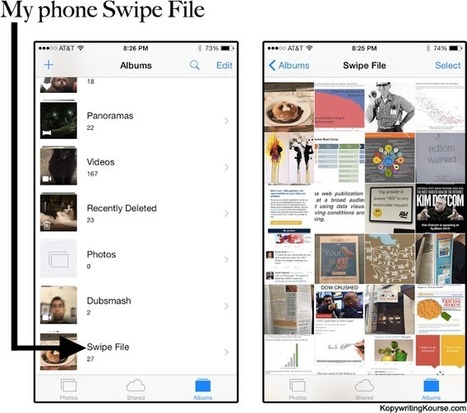

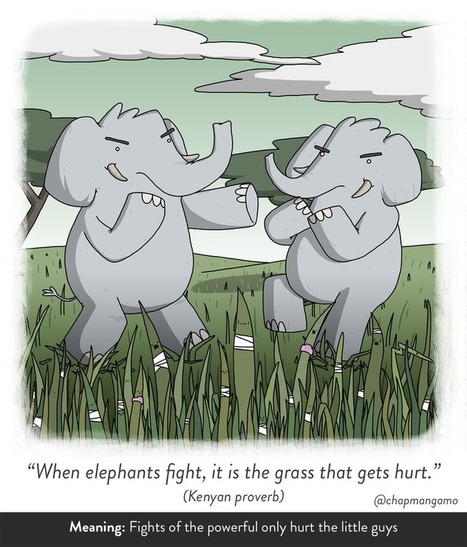
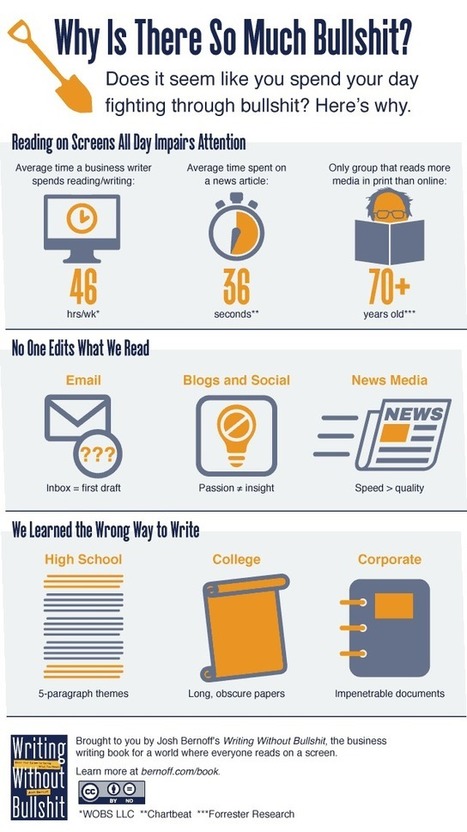









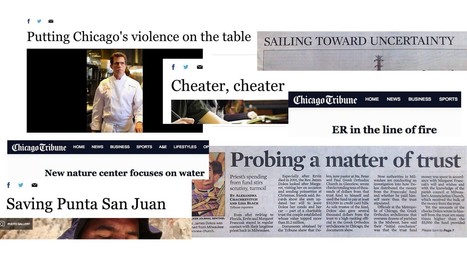
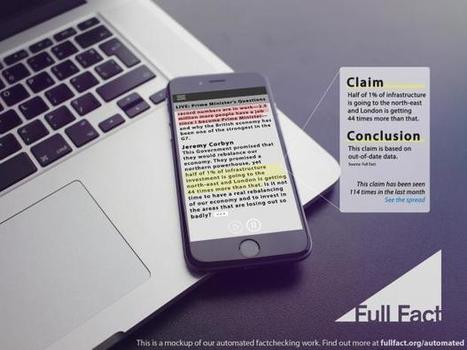






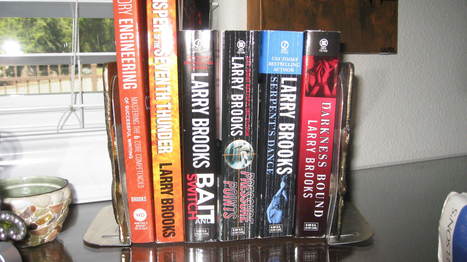









Here's a fun test for writers and bloggers.